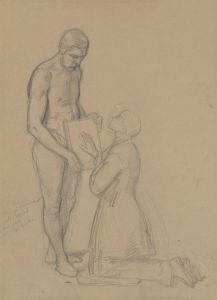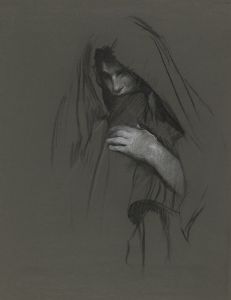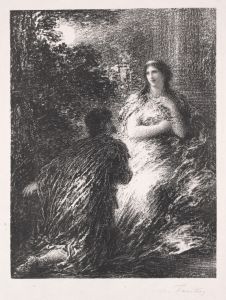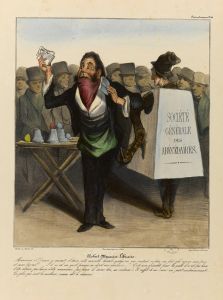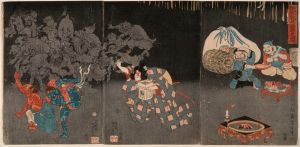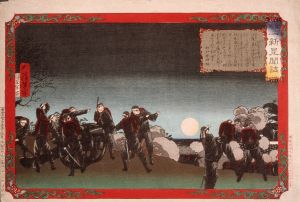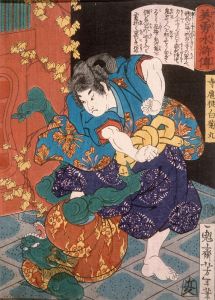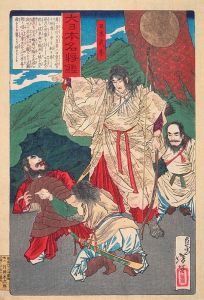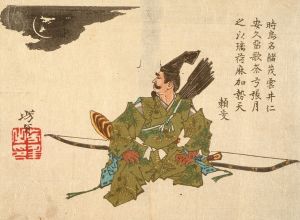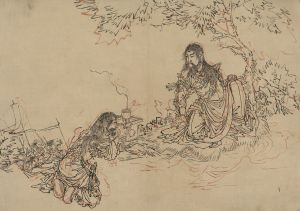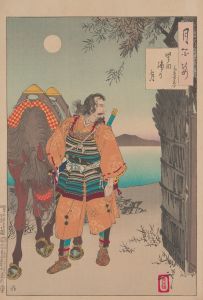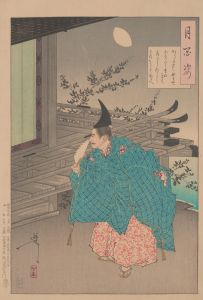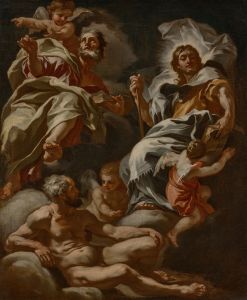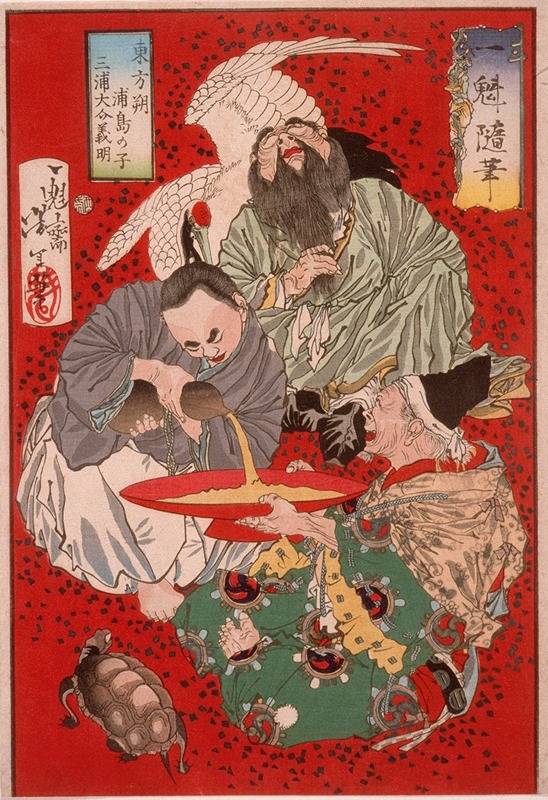
Tōbōsaku, Miura Yoshiaki the Tax Collector, and Urashima Tarō Drinking Wine
A hand-painted replica of Tsukioka Yoshitoshi’s masterpiece Tōbōsaku, Miura Yoshiaki the Tax Collector, and Urashima Tarō Drinking Wine, meticulously crafted by professional artists to capture the true essence of the original. Each piece is created with museum-quality canvas and rare mineral pigments, carefully painted by experienced artists with delicate brushstrokes and rich, layered colors to perfectly recreate the texture of the original artwork. Unlike machine-printed reproductions, this hand-painted version brings the painting to life, infused with the artist’s emotions and skill in every stroke. Whether for personal collection or home decoration, it instantly elevates the artistic atmosphere of any space.
Tsukioka Yoshitoshi (1839–1892) was a prominent Japanese ukiyo-e artist, known for his innovative and dramatic style, which often depicted historical scenes, folklore, and supernatural themes. One of his notable works is "Tōbōsaku, Miura Yoshiaki the Tax Collector, and Urashima Tarō Drinking Wine," which reflects his fascination with legendary and historical figures.
This artwork is part of Yoshitoshi's series "New Forms of Thirty-Six Ghosts" (Shinkei Sanjūrokkaisen), which he produced in the late 19th century. The series is renowned for its imaginative portrayal of ghostly and mythical subjects, combining traditional Japanese themes with Yoshitoshi's unique artistic vision. The series was published between 1889 and 1892, during a period when Yoshitoshi was at the height of his creative powers.
The print "Tōbōsaku, Miura Yoshiaki the Tax Collector, and Urashima Tarō Drinking Wine" brings together three figures from Japanese and Chinese folklore and history. Tōbōsaku, also known as Dongfang Shuo, is a legendary Chinese figure often associated with immortality. He is said to have stolen the peaches of immortality from the Queen Mother of the West, a mythological figure in Chinese Taoist tradition. This act granted him eternal life, making him a symbol of longevity and wisdom.
Miura Yoshiaki, on the other hand, is a historical figure from Japan's Sengoku period, known for his role as a tax collector. His inclusion in the artwork may symbolize the mundane and bureaucratic aspects of life, contrasting with the mythical and fantastical elements represented by the other characters.
Urashima Tarō is a well-known character from Japanese folklore. According to the legend, he was a fisherman who rescued a turtle and was rewarded with a visit to the Dragon Palace under the sea. There, he spent what seemed like a few days, but upon returning to his village, he discovered that many years had passed. Urashima Tarō's story is often interpreted as a tale about the passage of time and the transient nature of life.
In Yoshitoshi's print, the three characters are depicted drinking wine together, a scene that may symbolize the convergence of different realms—mythical, historical, and everyday life. The artwork captures Yoshitoshi's ability to blend various cultural narratives into a single, cohesive image, showcasing his skill in storytelling through visual art.
Yoshitoshi's work is characterized by its dynamic composition, attention to detail, and expressive use of color. His prints often convey a sense of movement and emotion, drawing viewers into the stories he depicts. "Tōbōsaku, Miura Yoshiaki the Tax Collector, and Urashima Tarō Drinking Wine" exemplifies these qualities, making it a significant piece within his oeuvre.
Overall, this artwork not only reflects Yoshitoshi's mastery of the ukiyo-e form but also his deep engagement with the cultural and historical narratives of Japan and China. Through his imaginative interpretations, Yoshitoshi has left a lasting impact on the world of Japanese art, influencing generations of artists and continuing to captivate audiences with his timeless depictions of legendary and historical figures.





